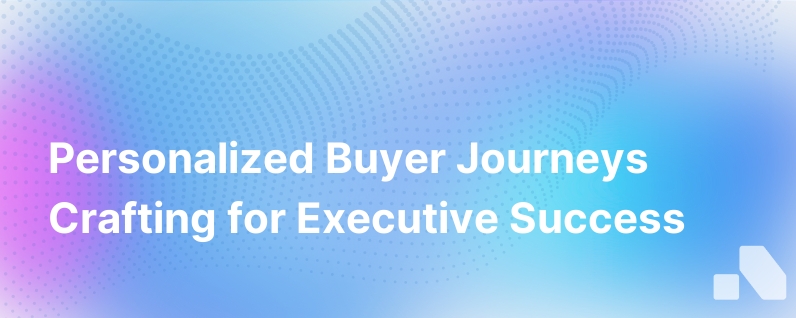
In today's highly competitive business landscape, personalizing the buyer's journey has become more than a trend—it's a necessity for companies aiming to captivate and convert their target audience effectively. The age of personalization ushers in an era where customer experience is paramount and understanding it is akin to possessing a roadmap to a treasure trove of engagement, loyalty, and increased revenue.
Understanding the Buyers Journey
At its core, the buyer's journey is the process prospects undergo as they become aware of, evaluate, and purchase a new product or service. Traditionally, the journey is broken down into three stages:
- Awareness: The buyer realizes they have a problem.
- Consideration: The buyer defines their problem and researches options to solve it.
- Decision: The buyer chooses a solution.
However, in the world of personalized buyer experiences, this model extends beyond a linear pathway. Personalization demands that we reconceptualize this journey as a series of interconnected, dynamic experiences that are shaped by the individual's behavior, preferences, and engagements.
The Importance of Personalized Buyer Journeys
Consumers these days are overwhelmed by choices and information. They expect brands to understand not just what they are looking to accomplish but how they want to feel and experience it—personalization is the answer to this expectation.
A personalized journey can significantly affect the bottom line. According to a study by Epsilon, 80% of consumers are more likely to make a purchase from a brand that provides personalized experiences. Furthermore, personalization can lead to a 5-15% increase in revenue and a 10-30% increase in marketing spend efficiency.
The Pillars of Personalization
Data-Driven Insights: The foundation of personalization is data. Utilizing customer data allows companies to understand behaviors, predict needs, and tailor experiences down to individual preferences.
Technology: Tools like CRM systems, marketing automation, AI, and machine learning analyze and activate the torrents of data a company collects.
Content: Content is the vessel for delivering personalized experiences. It needs to be relevant and dynamic, adapting to the needs of the consumer in real-time.
Touchpoints: Every interaction a buyer has with a brand is a touchpoint. Personalization requires optimizing these touchpoints to create a cohesive and individually relevant experience.
Creating Personalized Buyer Journeys
Creating personalized buyer journeys is a multi-step process that involves understanding your customers, leveraging data, and consistently iterating your strategy based on feedback and results. Here’s how to create them:
1. Gather and analyze customer data
In-depth data collection across multiple touchpoints is essential. Combine demographic, psychographic, and transactional data with behavioral insights. Incorporate data from web analytics, social interactions, purchase history, and customer feedback. Analyzing this data will reveal patterns and preferences that are critical to crafting personalized experiences.
2. Segment your audience
Not all customers are created equal. They have different needs, values, and behaviors. Segment your audience based on the data you’ve gathered to create distinct groups for which you can tailor specific journeys.
3. Map the journey for each segment
Understand the unique path that each segment takes. Map out each step—from initial awareness to post-purchase follow-up. Consider the channels they use, content they prefer, and pain points they have. This mapping should be as detailed as possible.
4. Create personalized content and messages
Develop content that speaks directly to the different segments and stages of the journey you've outlined. Use personalized emails, dynamic website content, and targeted advertising to address the specific needs and desires of each segment.
5. Utilize technology
Implement marketing automation tools to deliver personalized experiences at scale. Use AI and machine learning for more refined segmentation, predictive analytics, and real-time personalization.
6. Orchestrate across channels
Personalization must be omni-channel. Ensure that the personalized experience is seamless whether the buyer interacts with your brand on social media, your website, email, or in person.
7. Test, learn, and optimize
Personalization is not set it and forget it. Continuously test elements of your personalized journeys, harvest data, learn from user interactions, and tweak strategies to optimize the results.
8. Measure success
Establish KPIs to measure the impact of personalization. Monitor metrics like conversion rates, average order value, customer retention rates, and customer satisfaction scores.
Examples of Successful Personalization
Netflix: By analyzing viewing habits, Netflix personalizes recommendations for each user, ensuring that content discovery is tailored.
Amazon: Amazon’s recommendation algorithms analyze browsing history, purchase behavior, and item relations to showcase highly relevant product suggestions to its customers.
Spotify: Spotify curates personalized playlists like ‘Discover Weekly’ for each listener, leveraging machine learning to match music preferences.
Conclusion
A personalized buyer's journey is essential for any brand looking to thrive in the modern marketplace. Success lies in the delicate balance of art and science—matching a deep understanding of your customers with the adept use of data and technology.
As B2B sales platforms like Aomni understand, providing strategic tools that enable real-time account research, competitive insights, and personalized content can be essential to businesses wanting to craft these compelling, personalized sales experiences quickly and with no extra effort required on their part.
In this world dominated by personalization, every interaction counts. Take the time to get it right, and your customers will reward you with their loyalty and their business.